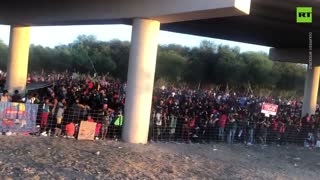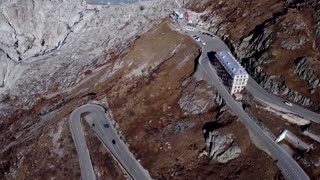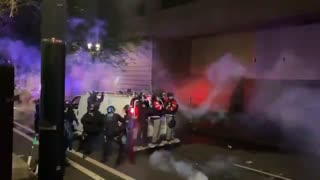Shocking time-lapse footage shows rapidly melting glaciers in Iceland over six weeks
Shocking time-lapse footage filmed over just six weeks shows how global warming is rapidly melting Iceland’s glaciers.
The film captured the quick retreat of the Breiðamerkurjökull glacier Vatnajökull National Park in the south-east of the country.
Experts believe the ice melt that occurs in the summer is now significantly exceeding the rate of recovery in the winter months because of warming temperatures.
The time-lapse was captured by Dr Kieran Baxter, a lecturer in Communication Design at the University of Dundee’s Duncan of Jordanstone College of Art & Design.
Working with colleagues at the University of Iceland’s Research Centre in Hornafjörður, the footage shows the startling rate at which centuries-old ice is melting.
Dr Baxter said: “Footage like this should act as a wake-up call that we cannot ignore the signs any longer.
“Climate change is already having dire consequences around the world and we have to take responsibility for that.
“The paths we choose now, including the decisions made at COP26, will have a huge influence on the climate impacts that we will have to deal with in the future.
“The volume of ice melt that we are seeing in Iceland is just one of the indicators that show us the scale of those impacts.”
Iceland’s glaciers are coming under increasing pressure from climbing temperatures.
Since 1989, Vatnajökull ice cap, one of the largest in Europe, has lost 150–200 km³ of ice and its area has been reduced by more than 400 km² according to the Icelandic Meteorological Office.
Many glaciers have retreated by more than a kilometre in this period.
Snævarr Guðmundsson, glaciologist at the South East Iceland Nature Research Centre, said: "While this footage represents only a fraction of the 16km wide glacier terminus, it demonstrates how rapidly Breiðamerkurjökull is now melting.
“When a glacier is in balance the winter accumulation would equal the summer melt, but we do not see that here.
“The ablation has accelerated beyond recovery and in recent decades a retreat of up to 250 metres per year has been recorded."
Dr Þorvarður Árnason, who leads the collaborative project at the University of Iceland, said: “Where our previous co-production, After Ice, involved re-creating the recent past of glacier melt in Iceland, the new project looks into the future – or rather a range of potential futures that depend on action to reduce greenhouse gas emissions today.
“This project involves close cooperation between artists and scientists in Scotland and Iceland.
“We have found this interdisciplinary work to be vital to successful climate change communication.”
Dr Baxter has previously captured aerial photographs of the disappearance of Iceland’s largest glaciers and of ice loss around Mont Blanc in the French and Italian Alps.
Helga Árnadóttir, a specialist at Vatnajökull National Park, added: “It is important to communicate the research that is happening in the national park and to improve access to the results through visualisations like this one.
“This project is of great value for the park rangers, park visitors and tour operators in the area and will increase the quality of information about melting glaciers and climate change.”
-
 1:37
1:37
SWNS
2 days agoWhat your favorite morning drink reveals about you
31 -
 0:56
0:56
RT
2 years agoShocking footage shows 10,000+ migrants packed under Texas bridge
5964 -
 0:30
0:30
Ryan Fournier
2 years agoSHOCKING Footage From Middle East Shows Devastating Impact of Airstrikes
4494 -
 1:07
1:07
Reuters Innovation
2 years agoDrone shows shrinking glaciers in Europe
711 -
 0:55
0:55
Dinesh D'Souza
3 years agoShocking New Footage Shows Children Crammed Inside Biden's Border Jails
21.4K136 -
 1:13
1:13
Reuters
2 years agoDrone footage shows lava and ash over Spanish island
424 -
 0:27
0:27
David Harris Jr.
2 years agoSHOCKING Footage Shows Antifa Shooting ROCKETS at Police in Portland
4.69K20 -
 LIVE
LIVE
Due Dissidence
7 hours agoDana Bash SMEARS Protesters, ORWELLIAN Speech Bill PASSES House, Columbia Fallout - w/ Prof. Zenkus
2,739 watching -
 LIVE
LIVE
Melonie Mac
2 hours agoGo Boom Live Ep 2: Lara Croft Wokeover and More!
1,246 watching -
 1:08:49
1:08:49
The Late Kick with Josh Pate
4 hours agoLate Kick Live Ep 509: Deion & Colorado | Transfer Portal Apology | Underrated Teams | CFP Issues
4.82K